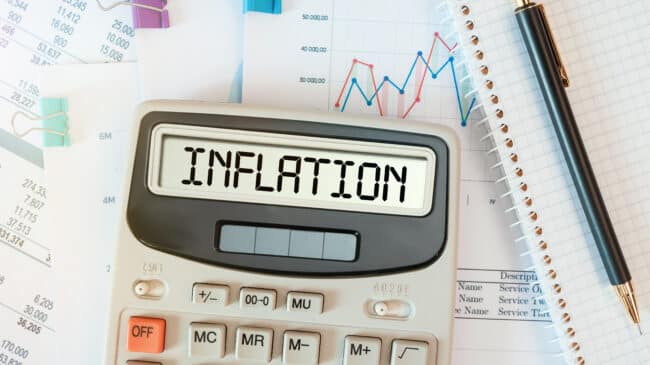The sharp increase in consumer prices this spring may be a blip but may also be a sign that inflation is returning as a chronic problem. For those of us who can accurately recall the 1970s economy, it is a frightening prospect. Everyone else would benefit from reading contemporaneous news coverage.
Recent events call into question pronouncements of the leading Modern Monetary Theorists who thought that the U.S. could sustain much larger deficits without triggering major hikes in the cost of living. Instead, it appears that the traditional rules of public finance still hold: deficit spending financed by Federal Reserve money creation is inflationary.
Analogies between today’s situation and the 1970s are not quite on target. By the early 70s, inflation was well underway. Instead, we should be drawing lessons from the year 1965, when price inflation began to take off. Prior to that year, inflation seemed to be under control with annual CPI growth ranging from 1.1 percent to 1.5 percent annually between 1960 and 1964 — not unlike the years prior to this one.
Like 2021, the post-election year of 1965 saw the inauguration of an ambitious unified Democratic government. That year, Congress enacted Medicare and Medicaid, began providing federal aid to local school districts, and greatly expanded federal housing programs. At the same time, the Johnson administration was expanding U.S. involvement in Vietnam, increasing the defense budget. The federal budget deficit expanded from $1.6 billion in the 1965 fiscal year (which ended on June 30 in those days) to $27.7 billion, or 3% of GDP, in fiscal 1968.
Although the Federal Reserve made some attempts to ward off inflation, it generally accommodated the government’s fiscal policy according to Allan Meltzer’s detailed history of this period published by the St. Louis Fed. Between calendar years 1965 and 1969, annual CPI growth surged from 1.6 percent to 5.5 percent, setting the stage for the Nixon administration’s closure of the U.S. Treasury’s gold window and imposition of wage and price controls. Inflation reached double digits in 1974 and again between 1979 and 1981. Notably, these were also recession years, refuting the fallacy of the Phillips Curve, which depicted a supposed policy trade-off between inflation and unemployment. By the early 1980s, we had ample evidence that ill-considered policies could give us a combination of high inflation and unemployment, known back then as “stagflation.”
This policy mix was also not great for equity investors. The Dow Jones Industrial Average moved sideways during the inflationary period, closing at the same level in December 1982 as it did in January 1966. One lesson from that period was that high interest rates can be bad for stocks.
That may be one reason the Fed remains reluctant to allow interest rates to rise today. Although messaging from the latest Federal Open Market Committee meeting showed greater willingness to normalize interest rates, action is not expected until 2023.
Rate hikes may bring other worries for the Fed in today’s environment. Given the large volume of variable rate mortgages and corporate loans outstanding in the U.S. today, a rise in interest rates could push highly indebted homeowners and companies into bankruptcy, potentially triggering a recession. The federal government would have to roll over its record stock of short-term debt at higher interest rates, ballooning its interest expense and potentially crowding out more popular spending priorities.
But if private capital is to continue participating in debt capital markets, such as those for corporate bonds and bank loans, interest rates will have to rise to compensate them for the loss of purchasing power on their principal.
Although annual growth in CPI fell sharply after 1982, it is not strictly correct to say that inflation was defeated. Except for a few years around the turn of the century, the federal government continued to run deficits, a portion of which were monetized. Notably, the government began running trillion dollar deficits, and the Fed drove interest rates down to near zero during the Great Recession, but CPI growth remained muted.
But CPI does not tell the whole story. Some sectors of the economy have experienced substantial inflation, but they are not fully incorporated in the consumer price index. Home prices, healthcare costs and college tuition all soared in recent decades. Meanwhile, apparel and consumer electronics remained affordable due to globalization and improved technology.
Back in the 1970s, most of the world was not part of the global economy. Eastern Europe was in the Soviet bloc, while China, Vietnam and India had yet to become major exporters. As more low-cost producers of goods and services came online during the 1980s and 1990s, prices were pushed downward (often and regrettably at the expense of American manufacturing jobs). The trend toward developing countries joining the international trading system and producing inexpensive consumer goods is now over. Indeed, the recent increase in protectionism is, if anything, rolling back the wave of international price competition.
On the other hand, technological improvements may continue to shield us from inflation in certain sectors. For example, the displacement of human cashiers by automated check stands might restrain price hikes at the big box retailers, supermarkets, fast food chains and other establishments that can afford to invest in them. Smaller businesses, facing higher wages, may have to try to pass them through to consumers in the form of higher prices. Already in some parts of the country, restaurants are trying to recoup costs without raising prices on their menus by adding various surcharges ostensibly tied to specific costs.
It is possible that inflation is now moving from assets and human-intensive services to consumer products, but we will need several months of additional data to know for sure. Meanwhile, policymakers should be cautious about adding more to the national debt and the money supply.
A version of this column originally appeared on TheHill.com.

